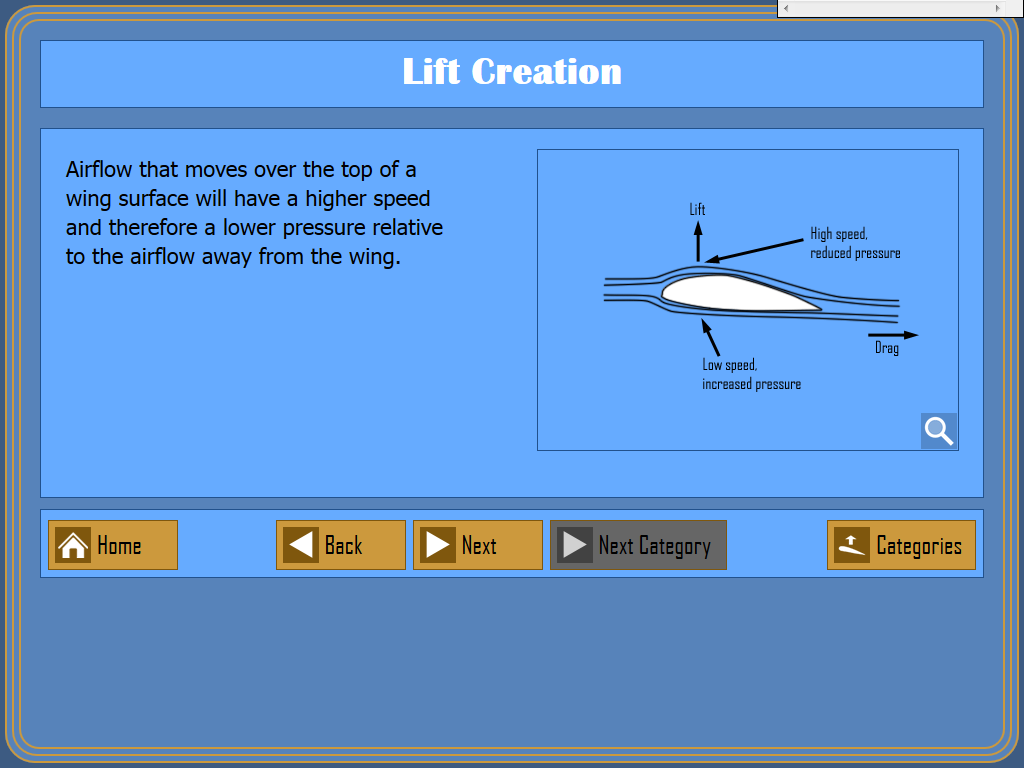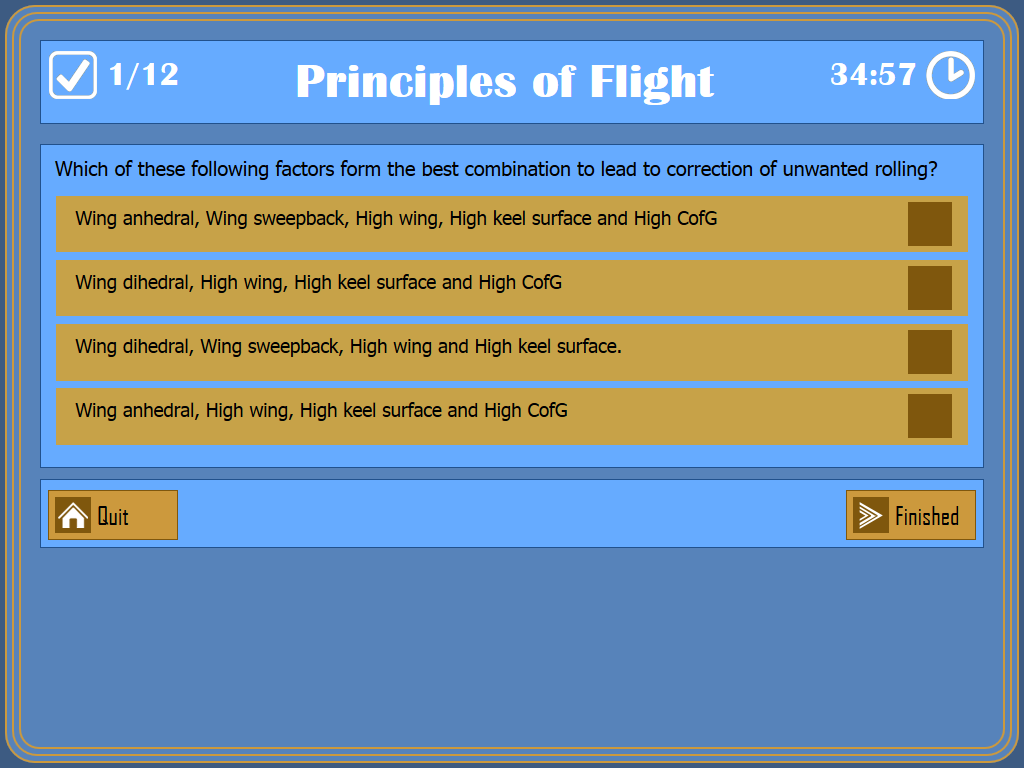PPL Principles of Flight Exam
You may have some memory of the basic principles of how wings generate lift from physics courses at school, but the Principles of Flight course will also explain to you why aircraft have tail fins, tapered wings, and all of the other small design decisions that have been brought about through a mixture of science and experience.
Compared to exams such as Navigation and Flight Performance and Planning, Principles of Flight is simpler, although not as straightforward as Communications or Human Performance. You will need to answer 12 multiple choice questions in 35 minutes, and the pass mark is again 75% which allows you to only answer 3 questions incorrectly.
There is a little mathematics involved in understanding how stall speed works, but much of the exam comes down to revising and memorising facts. The PPL Tutor Exam application contains over 40 pages of revision content to help you and, like the other eight subjects, you can practice multiple exams with questions based on the real test.
Next: The Meteorology Exam >
 An example of Principles of Flight revision content in PPL Tutor
An example of Principles of Flight revision content in PPL Tutor
 An example Principles of Flight exam question in PPL Tutor
An example Principles of Flight exam question in PPL Tutor